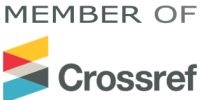Identifying Deviant Employee Behaviors in the Governor's Office of Golestan Province and Coping Strategies to Present a Model
Keywords:
Deviant employee behaviors, politicization, conflict management, grounded theoryAbstract
The present study was conducted with the aim of identifying deviant employee behaviors in the Governor's Office of Golestan Province and proposing coping strategies to design an applicable model. This research is applied in terms of its objective and was conducted using a mixed-methods approach (qualitative and quantitative) with an exploratory design. In the qualitative section, the grounded theory method was employed, while in the quantitative section, a survey method was used. The qualitative research population included 23 individuals working in the headquarters of the governorate (security, inspection, complaints handling units, and the administrative violations board), as well as in the security and performance evaluation units of county-level governorates. The quantitative population consisted of all employees of the Governor’s Office of Golestan Province. Sampling was conducted purposively in the qualitative phase and stratified randomly in the quantitative phase. Data were collected through semi-structured interviews in the qualitative section and via a questionnaire in the quantitative section. The qualitative data were analyzed through three stages: open coding, axial coding, and selective coding. In the coding stage, from a total of 532 initial codes, 410 final codes were extracted, which included causal factors (discriminatory behaviors, lack of spirituality, abnormal behaviors, greed, organizational injustice, organizational politics, violation of meritocracy, organizational misbehavior, work-related stress, bullying and Machiavellian behavior of managers, weak organizational structure, role ambiguity and conflict, and deficiencies in the employee compensation system); the core category (concepts of financial deviation, political deviation, personal deviation, service deviation, and organizational deviation); contextual factors (politicization, ethical challenges, barriers to meritocracy); intervening factors (psychological pressure, managerial incompetence, external interventions); and consequences (employee isolation and passivity, workplace indiscipline, job apathy, neglect of career development, decreased organizational productivity, managerial inefficiency, organizational dysfunction, financial and material inequality, erosion of public trust, and weakened social capital). In the quantitative section, the extracted model was validated using the Partial Least Squares (PLS) technique. Model reliability was confirmed using Cronbach’s alpha, composite reliability, and validity indices. Descriptive analyses included mean, median, and charts, while inferential analyses comprised factor analysis and structural equation modeling. The findings indicated that deviant employee behaviors are influenced by various organizational, managerial, and structural factors. Furthermore, strategies such as policy reform, motivation enhancement, conflict management, and improvement of the performance evaluation system were identified as effective solutions. The final model was presented as a framework for reducing deviant behaviors and enhancing organizational performance.
References
Ahmed, A. K., Atta, M. H. R., El-Monshed, A. H., & Mohamed, A. I. (2024). The effect of toxic leadership on workplace deviance: the mediating effect of emotional exhaustion, and the moderating effect of organizational cynicism. BMC Nursing, 23(1), 669. https://doi.org/10.1186/s12912-024-02308-x
Ali, F. B., Gul, S., Khan, A., & Sher, A. (2020). Psychological contract breach and workplace deviance: Study of higher education institutions in Peshawar. Iqra Journal of Business and Management (IJBM), 4(1), 94-121. https://www.researchgate.net/publication/346418926_Psychological_Contract_Breach_Workplace_Deviance_Study_Of_Higher_Education_Institutions_In_Peshawar
Alvar, Z., Feiz, D., & Modarresi, M. (2023). The meta-analysis of organisational deviant behaviours research: past, present, and future. International Journal of Organizational Analysis, 31(7), 3436-3478. https://doi.org/10.1108/IJOA-04-2022-3222
Alyafi, R. S., & Alzamil, B. S. (2024). Perceived Social Support and Workplace Deviant Behaviors: The Mediating Role of Self-esteem in Employees in Saudi Arabia. The Journal of Behavioral Science, 19(1), 51-67. https://www.researchgate.net/publication/381816251_Perceived_Social_Support_and_Workplace_Deviant_Behaviors_The_Mediating_Role_of_Self-esteem_in_Employees_in_Saudi_Arabia
Azim, A., Hassan, M., Zaid, D., & Daud, M. (2020). The influence of supervisor support, organizational trust on workplace deviant behavior: Do psychological contract matter? International Journal of Academic Research in Business and Social Sciences, 10(2), 116-132. https://doi.org/10.6007/IJARBSS/v10-i2/6895
Bagchi, A., & Bandyopadhyay, S. (2016). Workplace deviance and recession. B.E. Journal of Theoretical Economics, 16(1), 47-81. https://doi.org/10.1515/bejte-2014-0049
Baharom, M. N., Sharfuddin, M. D. K. B., & Iqbal, J. (2017). A systematic review on the deviant workplace behavior. Review of Public Administration and Management, 5(3), 1-8. https://www.researchgate.net/publication/323084655_A_Systematic_Review_on_the_Deviant_Workplace_Behavior
Gholami Ashkiki, A., & Fazli, S. (2023). Examining the Moderating Effect of Supervisory Intrusion on Employee Silence and the Impact of Perceived Organizational Political Behaviors and Leader-Member Exchange on Their Relationships (Case Study: Employees of Municipalities in Alborz Province). Journal of Behavioral Studies and Organizational Excellence, 1(2). https://www.sid.ir/paper/1132594/en
Jafari, M. B., Taheri Hoshi, A., & Mohebi, S. (2024). Identifying Determinant Components in Employees' Tendency Toward Job Deviant Behaviors Based on the Conservation of Resources Theory in Iran's Banking Industry. Defense Science and Technology Journal, 23. https://journals.sndu.ac.ir/article_3054.html?lang=en
Molavi, Z., & Nouri, L. (2022). Positive Deviant Behaviors and Factors Influencing Their Emergence Among Employees in Governmental Organizations (Case Study: Governmental Organizations in Qom Province). Quarterly Journal of Public Organization Management, 10(3). https://ipom.journals.pnu.ac.ir/article_8963.html
Muafi, U. (2011). Causes and consequence deviant workplace behavior. International Journal of Innovation, Management and Technology, 2(2), 123-126. https://www.researchgate.net/publication/323392841_Causes_and_consequence_deviant_workplace_behavior
Shie, A. J., Xu, E. M., Li, H., Yang, G., & Huang, Y. F. (2025). The impact of platform leadership on employee deviant innovation in digital transformation enterprises. Scientific reports, 15(1), 2446. https://doi.org/10.1038/s41598-025-86208-3
Yildiz, B., & Alpkan, L. (2015). A theoretical model on the proposed predictors of destructive deviant workplace behaviors and the mediator role of alienation. Procedia - Social and Behavioral Sciences, 210, 38-330. https://doi.org/10.1016/j.sbspro.2015.11.373
Zhao, Y., Mo, S., & Shi, J. (2014). The promotion mechanism of ethical leadership on employee-performance and satisfaction under high pressure work situation. Management World, 8, 120-131.

Downloads
Published
Submitted
Revised
Accepted
Issue
Section
License
Copyright (c) 2024 Mohsen Shafaei, Taraneh Enayati, Kiumars Khatirpasha (Author)

This work is licensed under a Creative Commons Attribution-NonCommercial 4.0 International License.









